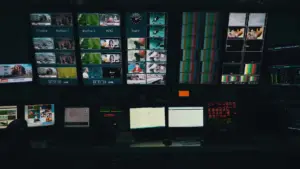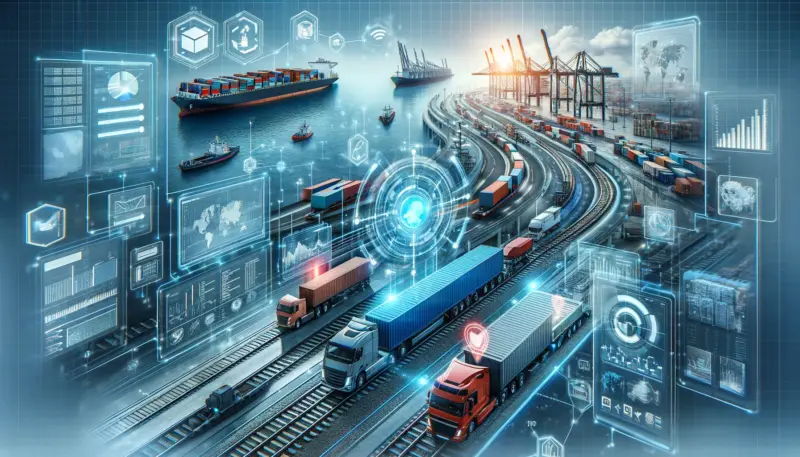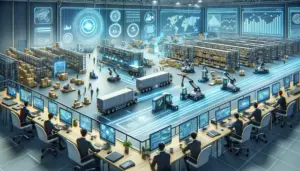New Rail Technology is Aiming to Revitalize More Rail Infrastructure as an Alternative to Trucking
Innovation in the world of rail infrastructure is often thought of as new train designs or faster speeds. But a paradigm shift is brewing in the way goods are transported across rails. Currently, Georgia wants to test that new technology. The emergence of technologies are reshaping the boundaries of what rail infrastructure can offer.
One particular system is designed to swiftly transport containers from busy ports and it presents a nimble alternative to traditional freight methods. Its essence lies not just in moving cargo efficiently, but also in its potential for dynamic train operations. While promising, the key question remains: can these systems integrate with conventional rail operations on busy lines? If the answer leans towards building a separate infrastructure, possibilities like utilizing interstate highway medians are intriguing. Today’s port congestion problems could soon see alleviation, but the vision for tomorrow seems even more revolutionary.
As the Executive Director of the Rail Transportation and Engineering Center at the University of Illinois at Urbana-Champaign, Christopher Barkan has vast experience and deep insights into rail systems and infrastructure. His perspective on innovative rail solutions sheds light on the advantages and challenges and considerations essential for the successful adoption of such technologies.
He shared a lot of thoughts regarding new technology and how that will impact port congestion, along with the trucking industry.
Barkan’s Thoughts
Challenges and Opportunities of Integrating New Technology with Conventional Rail
“If this technology is going to be widely used for long distances, as opposed to the relatively short distance from the port to the inland port that I mentioned a few moments ago, either they’re going to have to build, somebody’s going to have to build a whole new set of infrastructure, or it’s going to have to integrate with conventional rail operations, again, freight or passenger.”
Vendor Landscape and System Differentiation
“The one you’re talking about, I believe, is the Parallel Systems. That’s one of the vendors that’s developing this technology. As I sent you, that links to at least two other systems that are not identical and they’re not even necessarily competitive. They’re aiming to do different things, but they’re part of this sort of new genre of trying to use rail infrastructure in fundamentally new ways, innovative ways for transportation of freight.”
The Specific Use-Case of Parallel Systems in Georgia
“So the basic, as I understand the Parallel Systems one, this one in, did you say it’s in Georgia? Is that where it is? Yeah. Their challenge there, and it’s not unique to that situation, is to get containers off of a ship and out of the port quickly.”
Autonomous Bogies for Quick Port Operations
“You unload a container off the ship and it gets onto one of these autonomous self-propelled bogies or a pair of bogies rather, I should say, and it may be multiple coupled together, virtually coupled together, and gets them out of the port right away or very quickly.”
Competition with Over-the-Road Trucks
“It’s also not really competitive with conventional freight rail, in my opinion. It’s much more competitive with over-the-road trucks, because again, we’re talking about one or two or three containers, which are going to be the size of a semi-trailer, but moving them together again without any drivers, potentially moving them much more quickly across a network than a conventional freight train might operate.”
On Versatility and Bulk Transport
“The other thing that makes it different from conventional freight trains is, it is the fact that it’s a container, and of course, the railroads move large volumes of both containers and trailers filled primarily with manufactured goods. Railroads also move huge quantities of what we call bulk commodities, such as grain, coal, chemicals, lumber, various other things like that, that really can’t be economically moved long distances by a truck.”
Interoperability with Conventional Rail
“I think my biggest question is, can this technology be integrated with conventional rail operation, whether it’s freight or passenger? This line that they’ve installed it in Georgia, there’s very little conventional traffic. I don’t know, maybe there’s one train a day. So it’s pretty easy to stay out of the way of the conventional traffic if they’re only running one or two trains a day.”
Future Possibilities and Infrastructure
“And one of the thoughts I’ve had about whether if they didn’t want to build new infrastructure, I think it’s plausible that interstate highway medians might be useful for this, because this technology is not going to be as sensitive to greater curvature as conventional freight or passenger railroads.”
The Role in a Broader Transportation Ecosystem
“As I say, I really don’t think it’s highly competitive with conventional freight railroads. It’s an extension, not a competitor. It could be used to leverage conventional freight. And again, to reiterate what I said earlier, this installation in Georgia is to alleviate port congestion, to basically make seaborne transport of containers, essentially improve the port side interface to get the ship in there, get the containers out, and get them where they’re going without causing a lot of congestion at the port and slowing things down.”
Future Implications and Dynamic Trains
“One of the nice things about this system is this idea of dynamic trains. You can start out with a train of 15 of these, and you come to a junction and five of them go one way and 10 of them go the other way. And then you could get to a section of industry where those 10 are further broken up to go to three or four different loading docks. So it’s got lots of potential, but the infrastructure for all of that does not exist yet. Pieces of it do, but a lot of it is missing, but maybe that’s where we’ll go in the future.”
Article written by Alexandra Simon.







